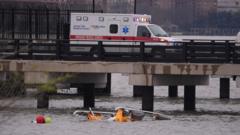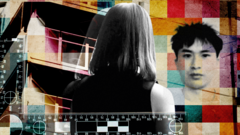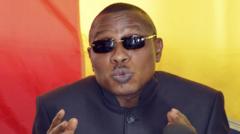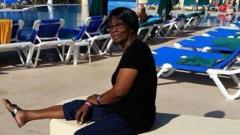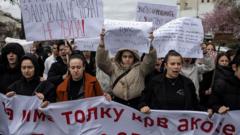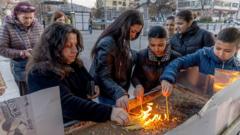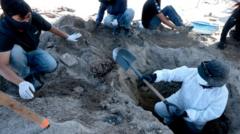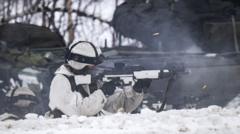A gunman, Rickard Andersson, committed Sweden's deadliest mass shooting at a school for adults in Orebro, leading to an investigation into his motives, mental health, and the ramifications for a society grappling with gun violence.
Insights into the Tragic School Shooting in Orebro, Sweden
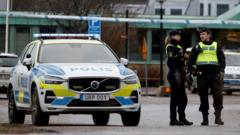
Insights into the Tragic School Shooting in Orebro, Sweden
Analysis of the recent mass shooting in Orebro, its perpetrator, and its broader implications on Swedish society.
In a shocking incident that has left Sweden reeling, a mass shooting occurred on Tuesday at Risbergska adult educational centre in Orebro, marking the deadliest event of its kind in the nation’s history. During the attack, which has resulted in the deaths of eleven individuals, including the shooter, police have gathered critical information about the assailant and the circumstances surrounding the tragedy.
The shooter, identified by Swedish media as Rickard Andersson, a 35-year-old local resident, reportedly lived a reclusive life and legally owned a firearm. Eyewitness accounts indicate chaos erupted as gunfire rang through the corridors; nursing student Hellen Werme recalled hearing multiple shots that prompted her teacher's urgent plea to take cover.
As investigators sift through evidence, they have found no links to organized crime or terrorism, leading authorities to conclude that Andersson acted independently and without a clear ideological motive. Local police chief Roberto Eid Forest emphasized that this situation could evolve as new evidence comes to light, underscoring the volatile nature of the investigation.
Details about Andersson's life reveal a history of isolation and potential mental health challenges. According to relatives, he had distanced himself from family and friends in recent years, which may have contributed to his tragic decision to commit violence. Following the attack, police conducted searches of his residence, discovering he did not hold any prior criminal convictions and had been unemployed for some time.
The weapon used in the shooting, identified as an automatic firearm, was reportedly a hunting weapon owned legally by Andersson, a fact that raises significant questions about firearms regulation in Sweden—a country known for its strict gun laws where only around 5% of the population possesses firearms.
Victims included a diverse group of individuals attending the adult education facility, which serves students aged 20 and above who did not complete primary or secondary education or who are immigrants seeking to learn Swedish. Health authorities have confirmed that several other victims remain in critical condition.
The local community has rallied to support each other in the wake of this tragedy. Places of worship have opened their doors for individuals seeking solace, while law enforcement endeavored to maintain civilian safety by securing the surrounding areas and schools during the immediate aftermath.
Historically, school shootings in Sweden are extremely rare; previous incidents, while tragic, have lacked the scale of this event. The rise in concern over gun violence has come into sharp focus, challenging societal norms and prompting debate about future regulations.
In conclusion, while the investigation continues and further details emerge, Sweden faces a moment of reflection on the impact of violence within its borders, with many left grappling with the lingering effects of this unprecedented act of aggression.
The shooter, identified by Swedish media as Rickard Andersson, a 35-year-old local resident, reportedly lived a reclusive life and legally owned a firearm. Eyewitness accounts indicate chaos erupted as gunfire rang through the corridors; nursing student Hellen Werme recalled hearing multiple shots that prompted her teacher's urgent plea to take cover.
As investigators sift through evidence, they have found no links to organized crime or terrorism, leading authorities to conclude that Andersson acted independently and without a clear ideological motive. Local police chief Roberto Eid Forest emphasized that this situation could evolve as new evidence comes to light, underscoring the volatile nature of the investigation.
Details about Andersson's life reveal a history of isolation and potential mental health challenges. According to relatives, he had distanced himself from family and friends in recent years, which may have contributed to his tragic decision to commit violence. Following the attack, police conducted searches of his residence, discovering he did not hold any prior criminal convictions and had been unemployed for some time.
The weapon used in the shooting, identified as an automatic firearm, was reportedly a hunting weapon owned legally by Andersson, a fact that raises significant questions about firearms regulation in Sweden—a country known for its strict gun laws where only around 5% of the population possesses firearms.
Victims included a diverse group of individuals attending the adult education facility, which serves students aged 20 and above who did not complete primary or secondary education or who are immigrants seeking to learn Swedish. Health authorities have confirmed that several other victims remain in critical condition.
The local community has rallied to support each other in the wake of this tragedy. Places of worship have opened their doors for individuals seeking solace, while law enforcement endeavored to maintain civilian safety by securing the surrounding areas and schools during the immediate aftermath.
Historically, school shootings in Sweden are extremely rare; previous incidents, while tragic, have lacked the scale of this event. The rise in concern over gun violence has come into sharp focus, challenging societal norms and prompting debate about future regulations.
In conclusion, while the investigation continues and further details emerge, Sweden faces a moment of reflection on the impact of violence within its borders, with many left grappling with the lingering effects of this unprecedented act of aggression.


